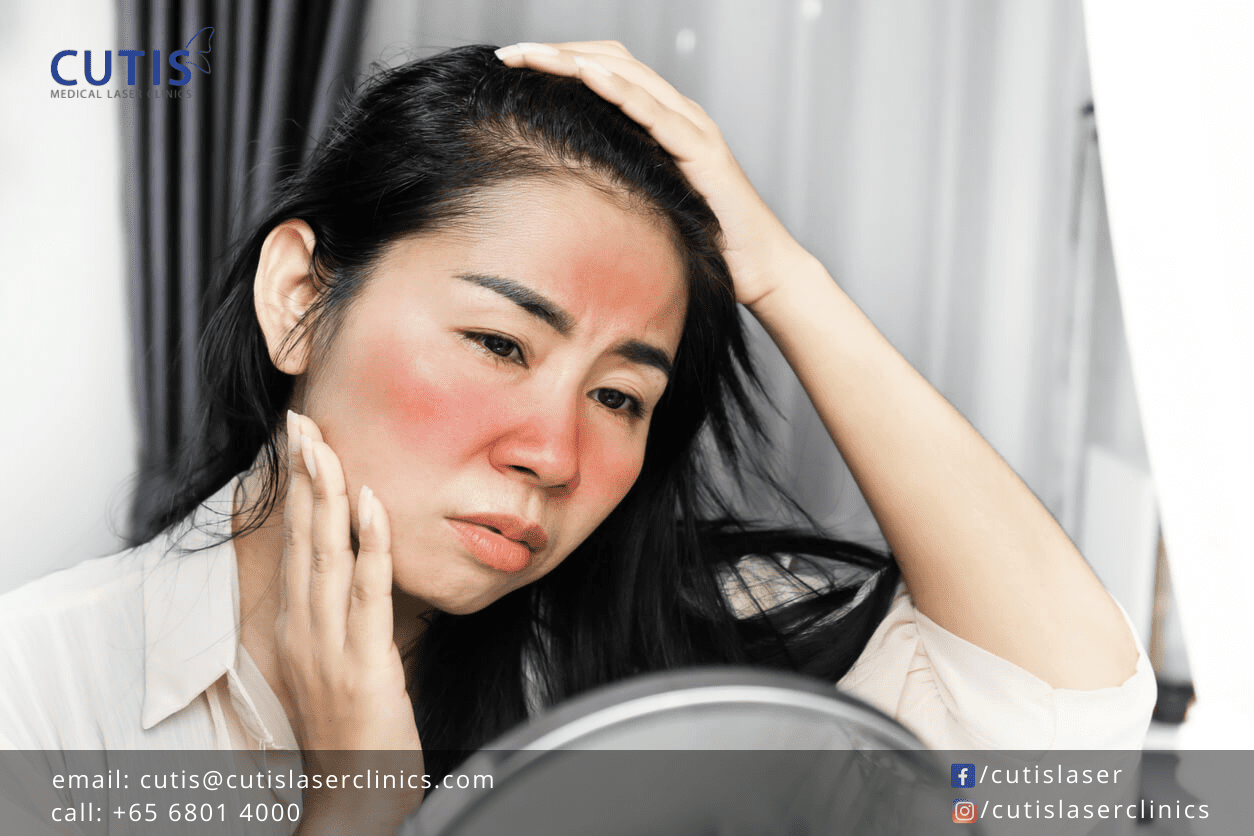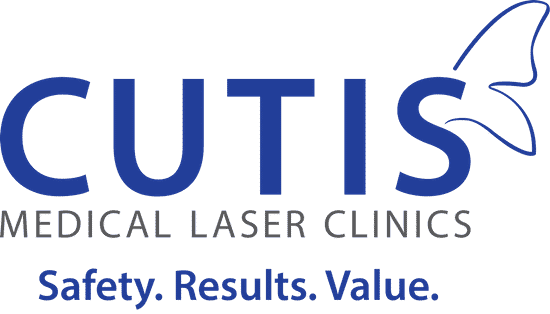Dealing with red skin on the face can be embarrassing and frustrating. It is also challenging to treat and may take days or even weeks to calm and soothe the redness. And on top of it, you cannot just mask it with makeup and concealers, as doing so can sometimes lead to further redness and irritation.

So, what can you do? How can you get rid of facial redness? It all starts with knowing what triggers this reaction.
What causes redness on the face?
A number of factors can cause your skin to appear flushed, inflamed, or irritated. Acne is one of the most common culprits, but facial redness is also associated with different skin disorders. Here are some of the common causes and their treatments.
1. Rosacea
This chronic inflammatory condition varies in appearance and can manifest itself in various forms. The most common symptoms of rosacea are facial flushing, irritated skin, and red, pus-filled pimples. It makes the skin sensitive and hyperreactive to certain triggers, including stress, alcohol, spicy foods, and temperature extremes.
What you can do: There is no permanent cure for rosacea, but it can be managed to avoid progression. It is best to see a board-certified dermatologist or aesthetic doctor to diagnose your skin and determine which type of rosacea you have. Make sure to consult your doctor before trying anything new.
2. Atopic dermatitis or eczema
Eczema is a chronic condition that causes the skin to itch, turn red, and have patches of dry skin from time to time. It can appear anywhere on the body, but is a lot itchier and more uncomfortable when it shows up on the face. Common triggers for facial eczema include food allergens, environmental irritants, stress, and temperature extremes.
What you can do: Just like rosacea, there is no cure for eczema. The first thing you should do is to see a doctor to confirm that it is eczema. Good hygiene practices, which include using gentle products and using hydrating creams regularly, can calm the redness and prevent the skin from being too dry. Prescription creams and ointments may also be recommended to improve your symptoms.
3. Contact dermatitis
This occurs when something that comes into contact with your skin irritates it or triggers an allergic reaction. The face is a common location for contact dermatitis. Common irritants can be found in some of your acne-fighting products, such as benzoyl peroxide and salicylic acid. Skincare with synthetic fragrances and preservatives can also cause your face to become red, but skin reaction still varies.
What you can do: The rash tends to go away on its own once you stop exposing your skin to the irritant. It is important to identify what’s causing the reaction to get rid of any associated symptoms. Other tips for managing include applying a cool compress to soothe your skin and using an over-the-counter anti-itch cream or medication.
4. Seborrheic dermatitis
This common skin condition shows up as redness (or scaling in some cases) on your face, particularly around the nose and eyebrows. Many associate seborrheic dermatitis with dandruff, but it affects your face instead of your scalp. The common cause is an overgrowth of yeast on the skin, causing redness, inflammation, or even scaling.
What you can do: Treatment may include using a dandruff shampoo (that usually contains zinc pyrithione) that you can also use on your face. This can help reduce yeast levels and related symptoms. You should also see a board-certified skin doctor to create a treatment plan that is right for your needs and concerns.
5. Over-exfoliation
When you exfoliate frequently or use harsh exfoliators, your skin is likely to appear red or inflamed in some cases. Over-exfoliation weakens and compromises the skin barrier, resulting in redness and inflammation. A damaged barrier can also make your skin vulnerable to infection from bacteria and fungus that may lead to further redness and sensitivity.
What you can do: Take it easy with exfoliation. And if you’re using retinol or other products with exfoliators, stopping them can help your skin recover. You might also want to switch with a gentle facial cleanser and use a fragrance-free moisturizer. Choose skincare with niacinamide and hyaluronic acid.
6. Spider veins
Also referred to broken blood vessels, spider veins on the face appear as tiny, red lines in a spiderweb-like form. They occur when the skin capillaries become dilated, which may be due to aging, damaged skin, or poor blood circulation. Other potential causes of broken blood vessels on the face include genetics, pregnancy, rosacea, excessive sun exposure, and weather changes.
What you can do: An aesthetic procedure like a laser treatment may help you get rid of spider veins. At Cutis Medical Laser Clinics, we have the Limelight Photo Facial, which uses an intense pulsed light (IPL) to target different skin concerns. It can treat tiny facial veins, facial redness, and pigmentation. It can also reduce the appearance of fine lines, wrinkles, and enlarged pores.
Can you avoid or prevent facial redness?
Identifying and avoiding your trigger is the key to preventing facial redness. Below are a few other things that can help:
- Wear sunscreen daily – Excessive sun exposure can trigger redness and make other skin conditions like rosacea worse. Wear a broad-spectrum sunscreen with SPF 30 daily, seek shade, and avoid peak hours.
- Keep it simple – Avoid layering certain products or applying too much of them, especially if you’re prone to redness. Keep your routine simple and use mild and gentle cleansers, serums, and moisturizers.
- Take it easy with exfoliation – Over-exfoliation can damage the skin and worsen other skin conditions. It is best to do it sparingly, no more than two to three times per week. It is also advisable to avoid physical exfoliants or with those tiny rough beads or scrubs.
See a professional
If you need help in finding out the cause of your facial redness, see a dermatologist or an aesthetic doctor. They can create a treatment plan that suits your needs, as well as recommend aesthetic procedures that can rejuvenate and improve the quality of your skin.
Here at Cutis Medical Laser Clinics, we have a number of non-invasive treatments that can revitalize your skin and give it a healthy glow. As previously mentioned, we have the Limelight Photo Facial for skin redness, tiny veins, sun-damaged skin, and enlarged pores. We also have Pearl Skin Resurfacing for uneven skin texture, dark spots, and fine lines and wrinkles.
Schedule a consultation
To learn more about our aesthetic treatments or to find out which suits you best, get in touch with us today. Contact Cutis Medical Laser Clinics in Singapore and schedule a consultation with our aesthetic doctor.
- If you would like to be an informed patient, please contact us at +65-6801-4000 or
cutis@cutislaserclinics.com. - Cutis Medical Laser Clinics, 9 Scotts Road Pacific Plaza, Scotts Medical Center #08-07, Singapore – 228210
+65-6801-4000 - cutis@cutislaserclinics.com
